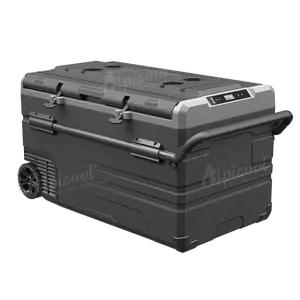Popular in your industry











Related Searches:


























Top categories
About water foam monitor
Types of water foam monitors
A water foam monitor is a device that is used to discharge water or foam over a long distance. It usually consists of a nozzle and a monitor. The nozzle can be adjusted to change the stream's pattern and reach. The monitor is mounted on a portable base or a fixed fire water monitor installation, which allows it to be aimed and rotated to cover a large area. There are different types of water foam monitors, which include:
- Portable water/foam monitor: These water/foam monitors are portable and can be carried and operated by one person. They are usually used in firefighting operations where mobility is required to reach different areas. Their portability allows them to be quickly deployed and repositioned as needed. Portable water/foam monitors are often mounted on a wheeled cart or a skid for easy transport. They are usually connected to a water or foam supply through a hose and can be operated manually or with a remote control.
- Fixed water/foam monitor: Fixed water foam monitors are permanently installed in a specific location, such as a fire station, industrial facility, or ship deck. They are designed to cover a predetermined area and are usually connected to a fixed water or foam supply. Fixed monitors are often used in applications where consistent coverage of a hazard is required, such as protecting storage tanks, loading racks, or shipboard machinery spaces. They may be equipped with automatic controls to activate in response to a fire alarm or other detection system.
- Ground monitor: A ground monitor, also known as a deck monitor, is a type of water/foam monitor that is designed to be mounted on the ground or a flat surface. It is usually larger and more powerful than a portable monitor and is capable of delivering a high flow rate over a long distance. Ground monitors are commonly used in industrial firefighting operations, such as petrochemical plants, refineries, and shipyards. They are often connected to a fixed water supply and may be equipped with a remote control for aiming and operating the monitor from a safe distance.
- Vehicle-mounted monitor: A vehicle-mounted monitor is a water/foam monitor that is installed on a fire apparatus, industrial vehicle, or other mobile equipment. It is designed to be used in firefighting or hazmat response operations where rapid deployment and mobility are required. Vehicle-mounted monitors are available in various configurations, including roof-mounted turrets, bumper nozzles, and telescoping masts. They are often connected to the vehicle's water or foam tank and pump system and can be operated from the driver's seat or a remote control panel.
Functions and features
- Function
Water foam monitors are important firefighting tools. They can shoot water and foam at fires. Water foam monitors may be used on vehicles, ships, or on the ground. They help control fires by spreading foam and water on them. Operators control these monitors from a distance. They can aim the water or foam at the fire. Many water foam monitors can spray as far as 100 meters. This helps keep operators safe from heat and smoke.
- Features
Here are some of the features of water foam monitors:
- Foam Inlet: This is where the foam comes in. Monitors that use foam must have this inlet.
- Ball Joint: This joint helps move the monitor up and down. It can also move side-to-side. The ball joint helps control the direction of the water or foam.
- Handwheel: A handwheel helps open and close the valve. This controls the flow of water or foam. The handwheel is easier for the operator to turn than a regular wheel.
- Water Inlet: This is where the water enters the monitor. All water monitors must have this inlet.
- Nozzle: A nozzle is at the end of the monitor. It helps control the spray of water or foam. There are many types of nozzles. Some nozzles can spray a jet of water a long way. Others can spray a wide area.
- Base: The base is the bottom of the water monitor. It can be fixed to a vehicle or building. This keeps the monitor steady and in place.
- Rotation Gear: This gear helps the monitor turn. It must have a gear for it to turn, so it can aim at the fire. The gears are usually powered by electricity, air, or a battery.
Applications of water foam monitor
Water foam monitors are used in a wide range of industries to put out fires. They can be used to extinguish fires, prevent flare-ups, and cool tanks, among many other uses. Some of the water foam monitor applications include the following:
- Ship decks: Firefighting is an important aspect of maritime operations. Water foam monitors are used in ship decks to fight fires quickly and efficiently. The monitors can be mounted on mobile equipment that moves around the ship, making it easy to reach the fire area.
- Storage tanks: Various industries use storage tanks. The tanks store flammable liquids, and their main concern is the possibility of a fire breaking out. Water foam monitors are used to keep tanks cool and put out fires quickly. Firefighting equipment is needed, especially in open tanks. Monitors are installed on a fixed tank or a mobile tank.
- Refineries: Water foam monitors are used in refineries to prevent fires and put them out quickly. They are installed in different parts of the plant, especially in areas that are at high risk of fires. Monitors can be installed on trailers, skids, or towers, depending on the specific needs of the refinery.
- Aviation: Aviation fuel is highly flammable. To prevent fires in airport facilities, water foam monitors are installed. They are used to put out fires in case of an accident. Monitors are installed on mobile equipment, trailers, and skids to allow them to respond to emergencies quickly.
- Chemical plants: In chemical plants, water foam monitors are used to prevent fires, put them out quickly, and cool tanks. The monitors are placed in strategic locations to ensure that they cover the entire plant. They can be installed on trailers, skids, towers, or fixed platforms.
- Marine terminals: Water foam monitors are used in marine terminals to put out fires. Monitors are often installed on mobile equipment that can be easily moved around the terminal. They can be mounted on trucks, trailers, or skids, depending on the specific needs of the terminal.
How to Choose Water Foam Monitors
When considering buying a fire water foam monitor nozzle or a foam water monitor, it's very important to establish the requirements of the specific application. Additionally, the water flow rate and pressure of the water source should be taken into consideration to ensure that the foam water monitor matches with the water flow and pressure capacity. The reach, flow rate, and throw of the water foam monitor should also be considered. For instance, when selecting a foam water monitor for a fire suppression system in a warehouse, the reach and flow rate of the monitor should be enough to cover the entire area. Furthermore, the water foam nozzle or monitor should be made of durable materials to withstand harsh environmental conditions. For example, a water foam nozzle made of corrosion-resistant materials can be used in marine applications. Also, ensure that the nozzle or monitor meets the required quality and safety standards for the specific application. For example, a water foam nozzle that meets UL standard is certified to provide a certain level of performance. It's important to buy a water monitor or nozzle that can be easily integrated with the existing fire suppression system. This will help to avoid any compatibility issues.
Q&A
Q1: How do water foam fire water monitors work?
A1: Water foam fire water monitors work by mixing foam concentrate with water and expanding it using air. It is then discharged through a nozzle to cover a large area such as a tank farm or a hydrocarbon spill.
Q2: How far can a water foam fire water monitor reach?
A2: The range of a water foam fire water monitor can be adjusted according to the type of nozzle. It can project foam or water up to 120 meters away.
Q3: What is a foam water fire water monitor?
A3: A foam water fire water monitor is an appliance that is used to deliver water or foam to a fire in a fixed location. It can automatically oscillate horizontally and vertically so that it can cover a large area.
Q4: What are the components of a fire water foam monitor?
A4: The components of a fire water foam monitor are the monitor nozzle, the monitor body, the control tube, and the foam maker. Some fire water foam monitors may also have a remote control system.
Q5: What is the role of a foam maker in a fire water foam monitor?
A5: The role of a foam maker in a fire water foam monitor is to expand the foam compound that is used for firefighting. It is the component that turns the foam concentrate into a foam with a consistent bubble size and cellular structure.



















